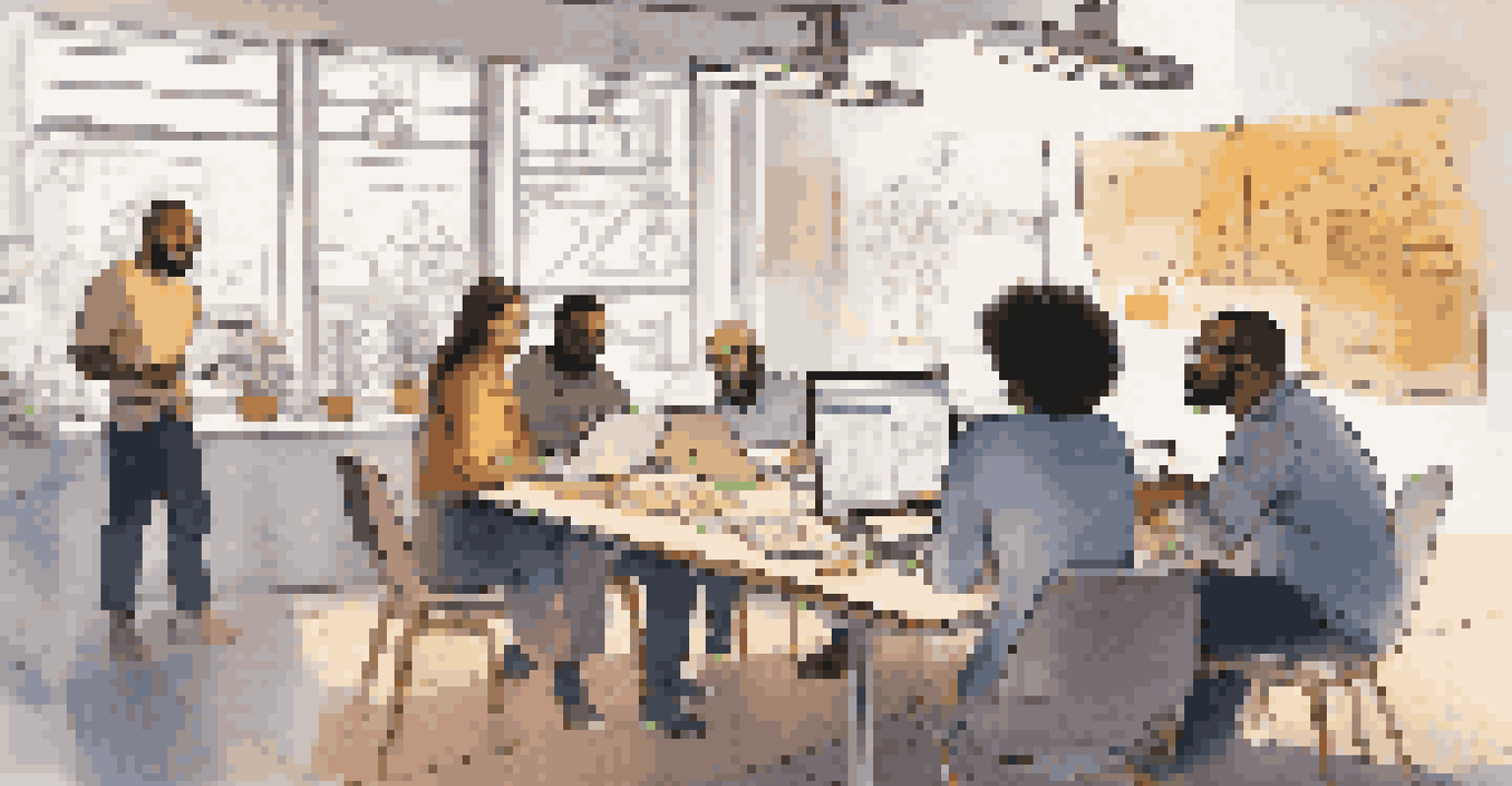Integrating DAM with Creative Software: A How-To Guide

Understanding Digital Asset Management (DAM) Basics
Digital Asset Management (DAM) is a system that helps organizations store, organize, and retrieve digital assets like images, videos, and documents. It acts like a digital library, making it easy to manage these assets efficiently. Understanding the basics of DAM will help you see how it can boost your creative workflow.
Digital asset management is about more than just storing files; it's about creating a seamless workflow that enhances collaboration and creativity.
Imagine trying to find a specific photo in a messy room filled with boxes—frustrating, right? That’s what managing digital assets without a DAM feels like. By implementing a DAM system, you can create a well-organized environment where assets are easily accessible and categorized.
Moreover, a good DAM solution makes collaboration smoother. When everyone on your team can access the same library of assets, it reduces duplication and ensures brand consistency across all creative projects.
Benefits of Integrating DAM with Creative Software
Integrating DAM with your creative software offers a host of benefits that can streamline your workflow. One of the most significant advantages is time-saving. By accessing your assets directly within your creative tools, you eliminate the need to switch between applications and waste valuable time searching for files.

Additionally, integration enhances collaboration among team members. Everyone can work from the same asset library, ensuring that the latest versions of assets are utilized. This is particularly beneficial in large teams or agencies where multiple creatives may be working on the same project.
DAM Boosts Digital Asset Management
Digital Asset Management (DAM) serves as a digital library, streamlining the organization and retrieval of digital assets like images and videos.
Finally, a seamless integration helps ensure consistency across your brand materials. When everyone is pulling from a centralized library, the risk of using outdated or incorrect assets is significantly reduced.
Choosing the Right Creative Software for Integration
When it comes to integrating DAM, choosing the right creative software is crucial. Popular options like Adobe Creative Cloud, Canva, and Figma have robust APIs that facilitate smooth integration with various DAM systems. Consider your team's needs and the types of projects you typically handle when making your choice.
The most effective teams are those that can access the right assets at the right time, turning ideas into reality with minimal friction.
Think of it like picking the right tools for a job; using the right software can make all the difference in your workflow efficiency. Assess the compatibility of your chosen DAM with your creative tools to ensure a seamless experience.
Moreover, evaluating user feedback and case studies can provide insights into how other teams have successfully implemented these integrations. The right choice can empower your team to unleash their creativity without technical roadblocks.
Setting Up Your Integration: Step-by-Step Guide
Setting up your integration may sound daunting, but breaking it down into manageable steps can ease the process. Start by reviewing both your DAM and creative software documentation to understand their integration capabilities. Most systems will have a guide or support team to assist you.
Next, connect the two platforms by following the provided instructions. This usually involves generating API keys or tokens to allow access between the systems. Once connected, you’ll want to test the integration to ensure assets are flowing correctly from your DAM into your creative software.
Integration Enhances Team Efficiency
Integrating DAM with creative software saves time and improves collaboration by allowing teams to access a centralized library of assets.
Finally, train your team on how to utilize the integration effectively. Providing a brief tutorial or resources can help everyone adapt to the new workflow and make the most of the tools available.
Best Practices for Maintaining Your DAM Integration
After successfully integrating your DAM with creative software, maintaining that integration is vital for ongoing success. Regularly audit your digital assets to ensure they are organized and up-to-date. This prevents clutter and enhances productivity as your team continues to work.
It’s also crucial to keep both systems updated. Software updates can introduce new features or improve performance, so staying current can help you capitalize on these improvements. Schedule periodic check-ins to ensure both systems are functioning as intended.
Lastly, encourage feedback from your team about the integration. Understanding their experiences can help you identify areas for improvement and enhance collaboration further.
Common Challenges and How to Overcome Them
While integrating DAM with creative software can greatly enhance efficiency, it’s not without its challenges. One common issue is the learning curve associated with new systems. Teams may struggle to adapt to changes, so providing comprehensive training and resources is essential.
Another challenge can be technical glitches or connectivity issues. If assets aren’t syncing properly, it can disrupt your workflow. Regular maintenance and clear communication with your IT support can help mitigate these issues before they impact productivity.
Future Trends in DAM Technology
Emerging trends in DAM include AI for asset management and an increased focus on cloud solutions to facilitate remote collaboration.
Lastly, managing user permissions and access can be tricky. Ensuring that the right people have access to the right assets can be a balancing act. Implementing a clear permissions structure will help maintain control without stifling creativity.
Future Trends in DAM and Creative Software Integration
As technology evolves, so do the trends in DAM and creative software integration. One emerging trend is the use of artificial intelligence to enhance asset management. AI can help automate tagging, sorting, and even recommending assets, making the creative process even smoother.
Another trend is the increased focus on cloud-based solutions. This shift allows for better remote collaboration, making it easier for teams to work together regardless of location. As more teams adopt hybrid work models, the demand for cloud integration will only grow.

Lastly, look out for advancements in user experience design for these tools. As user needs evolve, companies will focus more on creating intuitive interfaces that simplify the integration process, making it accessible for all team members, regardless of technical skill.